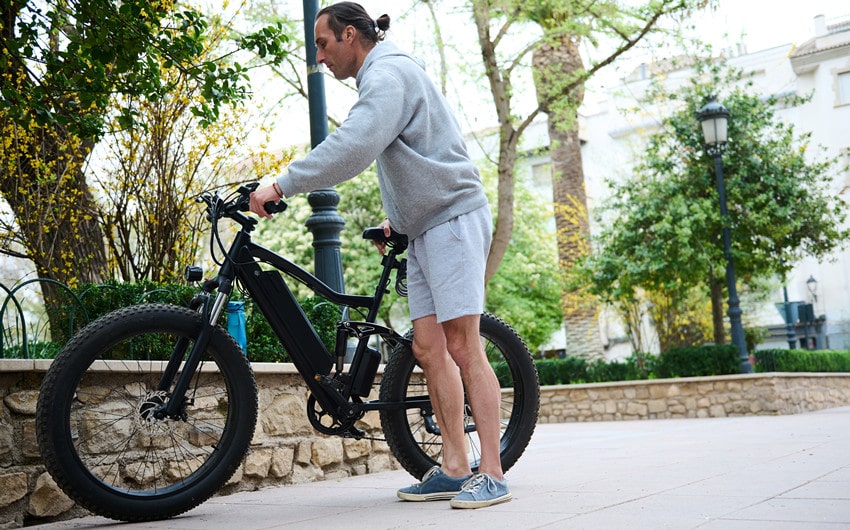How E-Bikes Are Changing Urban Transportation
Have you ever sat in bumper-to-bumper traffic, watching cyclists zoom past while you barely inch forward? If so, you’re not alone. Cities everywhere are bursting at the seams with cars, and traditional transportation methods are struggling to keep up. Public transit is overcrowded, ride-sharing costs are climbing, and gas prices seem to rise every other week.
Enter e-bikes—the two-wheeled disruptors shaking up how people move in cities. They’re faster than traditional bicycles, cheaper than cars, and don’t leave riders sweating through their work clothes. They glide past traffic, squeeze into tight spaces, and offer a way to travel without the frustration of finding parking. It’s no surprise that e-bikes are gaining traction worldwide.
In this blog, we will share how e-bikes are reshaping city life, from reducing congestion to making daily commutes faster and more efficient.
The Rise of E-Bikes in Cities
A few years ago, seeing someone on an electric bike might have been a novelty. Today, they’re everywhere. In cities like New York, San Francisco, and London, e-bike use has skyrocketed. The numbers tell a clear story—sales of e-bikes have outpaced electric cars in several countries, and more people are swapping gas-powered commutes for battery-assisted rides.
The pandemic played a big role in this shift. When public transportation became a health concern, many city dwellers looked for alternatives. Biking was already gaining popularity, but e-bikes made it more accessible. They allowed people to travel longer distances without exhaustion, making them a practical choice for daily commuting.
Cities have responded by adjusting their infrastructure. More bike lanes are popping up, and some areas are even restricting cars in favor of cyclists. Some cities offer subsidies or tax incentives to encourage people to make the switch.
One of the biggest appeals is the benefit of ebike travel in cutting commute times. Traffic in major cities can turn a short drive into an hour-long ordeal. But an e-bike rider can zip through dedicated lanes, bypassing cars stuck in gridlock. It’s not just about convenience; it’s about efficiency. For many, it’s the difference between a stressful morning and an easy ride to work.
Businesses are also adapting. Food delivery services now rely heavily on e-bike couriers. Companies are offering employees e-bike incentives instead of parking reimbursements. The shift isn’t just among individuals—it’s becoming a broader movement.
A New Way to Think About Urban Sustainability and Space
For decades, cities were built around cars. Streets got wider, parking lots took over valuable land, and traffic signals catered to four-wheeled vehicles. But this approach is no longer sustainable. With growing populations and increasing congestion, cities are being forced to rethink their layouts.
E-bikes fit perfectly into this evolving vision. They require less space, don’t contribute to noise pollution, and don’t spew emissions into the air. The shift from car-centered planning to bike-friendly cities isn’t just good for riders—it benefits everyone. Less traffic means fewer delays for buses and emergency vehicles. Fewer cars mean safer streets for pedestrians.
Take Paris as an example. The city has been aggressively redesigning its streets to prioritize bikes over cars. Major roads that once catered to heavy traffic are now lined with bike lanes. E-bikes are at the center of this transformation, making it easier for people to travel without relying on personal vehicles.
Los Angeles, known for its sprawling freeways and infamous traffic, is also making adjustments. City officials are testing car-free zones and offering incentives to residents who choose alternative transportation. E-bikes, with their ability to cover more ground than traditional bicycles, are playing a crucial role in these efforts.
It’s not just big cities making changes. Smaller urban areas are recognizing the potential of e-bikes too. College towns, business districts, and suburban communities are creating infrastructure to support their use. The goal is to make cycling—not driving—the default for short trips.
Who Benefits from the E-Bike Boom?
E-bikes aren’t just for the ultra-fit or environmentally conscious. They’re appealing to a broad range of people.
For commuters, they offer a solution to the headaches of traffic and unreliable public transport. Instead of waiting for a late bus or sitting in a jammed subway car, riders can control their own schedules. They get to work faster and without the stress of unpredictable delays.
For older adults or those with physical limitations, e-bikes provide mobility that a traditional bicycle might not. Pedal assist helps with hills and long distances, making cycling possible for people who might otherwise avoid it.
For businesses, e-bikes are cutting costs. Delivery services can move faster without fuel expenses. Companies can encourage employees to use e-bikes instead of paying for parking spaces. In some cities, even police departments are using e-bikes to patrol crowded areas.
Even public transportation is getting involved. Some transit systems now integrate e-bikes into their networks, offering bike-share programs at train and bus stations. The goal is to make the transition from public transit to cycling seamless, encouraging more people to leave their cars behind.
Challenges and the Road Ahead
Despite the momentum, e-bikes aren’t without challenges. Infrastructure is still catching up, and not all cities are ready for an influx of bike traffic. Some drivers see cyclists as obstacles, and conflicts between cars and bikes remain a concern.
Battery life and charging stations are also points of discussion. While e-bikes are more energy-efficient than cars, they still require power. Cities looking to encourage widespread use must think about charging solutions, just as they have with electric cars.
Then there’s the question of affordability. While prices are coming down, a high-quality e-bike is still an investment. Governments offering subsidies or rebate programs could help make them accessible to more people.
Even with these hurdles, the trajectory is clear. E-bikes are here to stay, and cities will need to adapt. Those that embrace the shift early will likely see benefits in lower emissions, reduced congestion, and healthier populations.
The bottom line? E-bikes aren’t just another transportation trend. They’re reshaping how people move through cities. They offer speed, flexibility, and a practical alternative to cars, all while reducing urban congestion and pollution.
As more people make the switch, cities will need to rethink how they allocate space and resources. Roads that once prioritized cars may soon cater more to bikes. Transportation policies will have to reflect the growing number of e-bike riders.
The shift won’t happen overnight. But as e-bikes continue to rise in popularity, it’s clear that urban transportation will never be the same. The question is no longer whether cities will adapt—it’s how fast they’ll do it.







